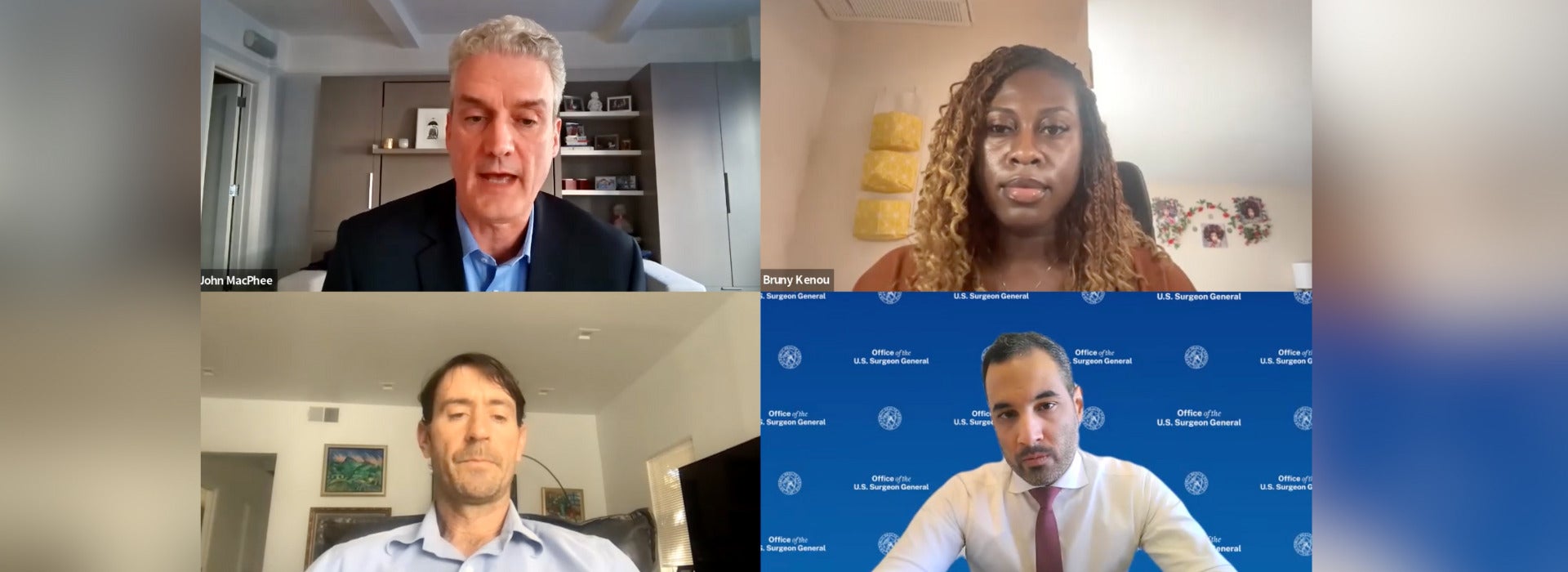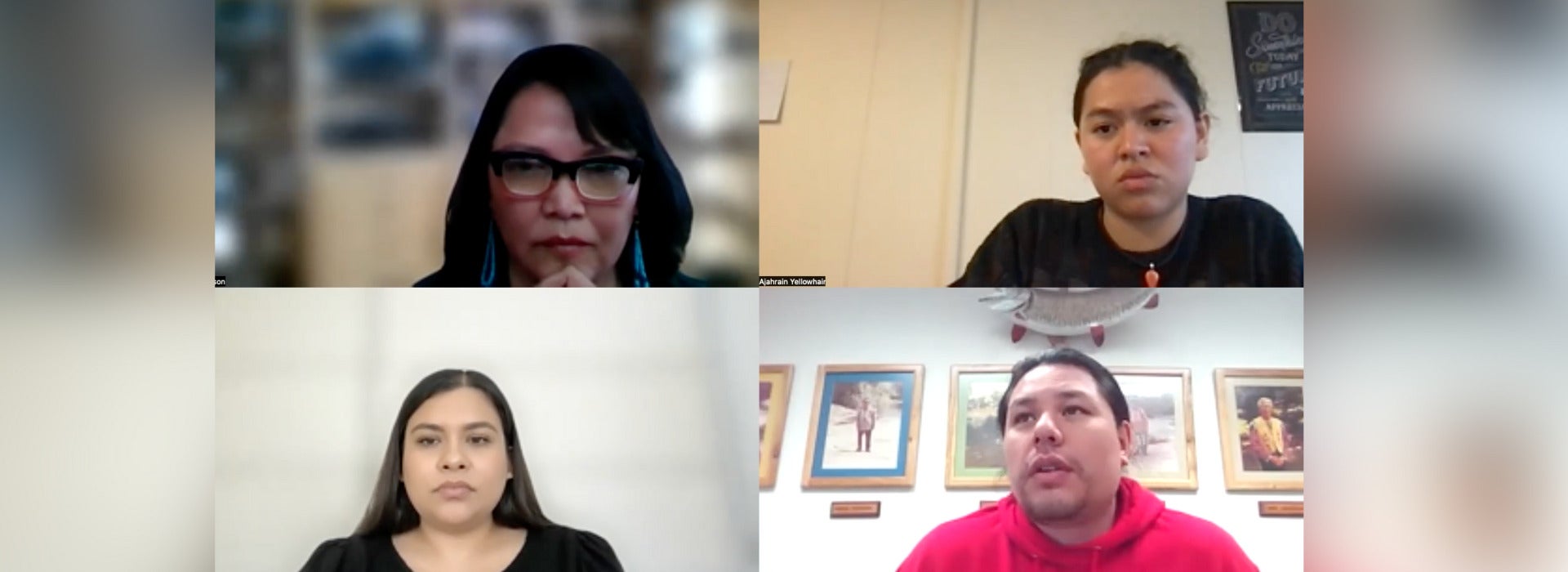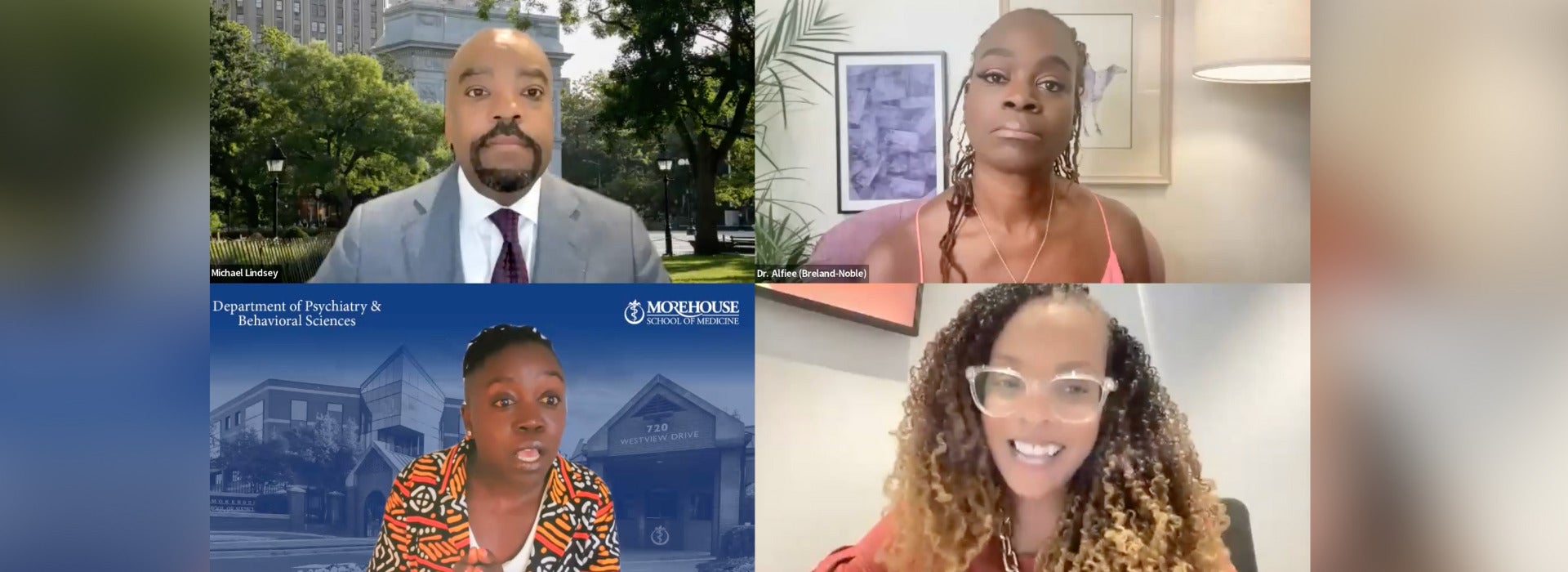The United States faces an Adolescent Mental Health crisis. As distress continues to rise among youth populations, so does the demand for appropriate care. But providers can’t keep up. The CDC says that 80% of children and youth who need treatment have no access to a specialized mental health provider. This crisis also disproportionately affects our most vulnerable populations––the shortage of care is particularly worse for those in rural areas for people of color and for LGBTQ+ youth. Recognizing it takes years for people to train mental health professionals, how can we face this urgent challenge and create better care for young people now? What does sustainable care look like going forward? And what are the root causes of this crisis in the first place?
To answer these questions, the Aspen Health Innovators Fellowship is gathering Fellows and experts to identify solutions through a five-part dialogue series. Three sessions have already taken place––below, find insights from sessions on the landscape of youth mental health and spotlights on Indigenous, Black, LGBTQ+, and Latinx Youth.
Understanding the State of Youth Mental Health in the U.S.

To begin the dialogue series, moderator Bruny Kenou, John MacPhee, Dr. Atul Nakhasi, and Dr. Daniel Eisenberg guided us through a conversation on the issue at large.
“Mental health challenges are real, common, and treatable,” says Dr. Nakhasi, who serves as Director for Science & Policy for the Office of the U.S. Surgeon General. To Dr. Nakhasi, a key solution to the youth mental health crisis is investing in supportive adult relationships.
Adult relationships are critical, whether it be with a parent, coach, teacher, or healthcare professional––but data shows that often youth are turning to each other before seeking help from family members and professionals. Dr. Nhakasi also emphasizes the importance of promoting peer support programs and elevating youth voices. Obtaining the qualifications to become a healthcare professional takes time, which is why strengthening the workforce will not happen overnight. To move forward, we must also recognize the importance of community building.
“The idea is that mental health belongs to everybody,” says John MacPhee, CEO of The Jed Foundation, a nonprofit that partners with schools to protect students’ emotional health and prevent suicide for our nation’s teens and young adults. “Dr. Nakhasi talked about the importance of centering youth and making sure that they are involved. They need to be involved in the leadership and in the planning around what a school does.” The Jed Foundation offers a comprehensive, multi-tiered support system to approach mental health care in schools.
Equally as important as youth involvement is data––we know that youth experience mental health challenges, but data is essential for understanding differences among students. One way to understand these differences is through tailored approaches to mental health. Dr. Daniel Eisenberg, a health economist and professor at University of California, Los Angeles, emphasizes that the plans we use to care for elementary schoolers can’t be the same as those used for teens. But the plans are just one part of the solution, to fully address the situation, Dr. Eisenberg believes in a holistic approach to mental health:
Spotlight Indigenous Youth: Fighting Erasure and Leveraging Community-Oriented Healing

Indigenous Youth are among some of the most vulnerable who suffer disproportionately from mental health challenges. In a session focused on the Indigenous community, Bryant Waupoose, Julisa Lopez, Dr. Patricia Nez Henderson, and moderator Ajahrain Yellowhair shared their personal experiences with mental health crises, the latest research on the unique challenges Indigenous Youth face, and how they’re creating effective, culturally tailored solutions.
Erasure of Native Peoples in Culture and Media Perpetuates Bias
Julisa Lopez, a social psychology PhD candidate at the University of Michigan, explores the impact of generational trauma on indigenous youth through examining how erasure and lack of representation of Native peoples perpetuates societal bias and discrimination.
Julisa Lopez notes that contemporary representations of Native peoples are often omitted from media and educational domains in society. “Despite the fact that Native peoples make up three percent of the U.S. population, less than half a percent of the characters on primetime television are native,” says Lopez. “Similarly, 87% of the curricula in K-12 history standards refer to Native peoples in a pre-1900 context. This means that only 13% of the time are Native peoples mentioned past the 1900s.”
Julisa Lopez’s research calls on us to ask important questions about the wellbeing of Native Youth.What is the impact of looking out into the world and not seeing yourself reflected?
To combat this erasure and negative mental health outcomes, there must be a call for collective action. “We must commit to social change that infuses the broader culture with more accurate and contemporary and historical representations of Native peoples that are defined by Native peoples,” Julisa says.
Culturally Tailored Solutions
Bryant Waupoose, Director North America for the Menominee Indian Tribe of Wisconsin and enrolled member, has dedicated his life to inspiring indigenous youth to live healthy lifestyles. His organization Indifly uses fly fishing and indigenous concepts to connect youth to creation and promote wellness. “We use nature and land in all of our approaches, and it cultivates a safe and healthy environment to build relationships and empower self resiliency,” he says.
Healing Generational Trauma
Central to addressing the mental health challenges for Indigenous American Youth is healing from generational trauma. “Unless we heal from that, I think we’re going to continue to have these issues,” says Dr. Patricia Nez Henderson, Vice President of the Black Hills Center for American Indian Health and a member of the Navajo Nation. “And how do we do that? I think Bryant and individuals like him are doing the work––whatever we can do on our end to really uplift the ceremonies that are still with us, the songs, and then providing that space for people to heal. There has to be truth and reconciliation.”
Spotlight Black Youth: Confronting Racism as Root Cause of Mental Health Crises

During the third session on May 11, 2023, Dr. Michael Lindsey (Health Innovators Fellow), Dr. Wizdom Powell (Health Innovators Fellow), and Dr. Sarah Vinson, convened in a discussion moderated by Dr. Alfiee Breland-Noble about how the national mental health crisis is uniquely affecting Black Youth. “Rates of suicide and suicide behaviors have been on the rise, particularly starting around the year 2000, at a very, very fast rate for Black youth,” says Dr. Michael Lindsey. Recent CDC findings show that Black students are more likely to attempt suicide than students of other races and ethnicities. Black children and adolescents are also more likely to be diagnosed with a disorder involving hostility or aggression than their white counterparts, even when their symptoms are similar.
Why are suicides and suicide behaviors dramatically on the rise for Black youth?
Racialized Stress Produces Unique Threats
“Often when we have these cultural discussions,” says Dr. Sarah Vinson, “things that are framed as cultural or as an attribute of Black people are really an attribute of how they’re responding to the unique stressors that they are placed under.” Dr. Vinson is a physician who specializes in adult, child & adolescent, and forensic psychiatry.
“As we think about racism and its potential impacts on mental health, it’s important that we call a thing a thing,” says Dr. Wizdom Powell. To start the conversation, Dr. Powell uses Ta-Nehisi Coates’ definition of racism.
This definition cuts through fragility and a preoccupation with comfortability, which further helps us lean into the ways racism compromises the decision-making and behaviors of young people.
Dr. Powell also cites Dr. Janet Helms, who helps us understand that trauma doesn’t have to be the result of something that happens directly to someone––simply observing these experiences can result in the same types of symptomatology as if the individual were the one facing a life-threatening or murderous assault. Studies show that when youth, particularly Black adolescents, are exposed repeatedly to these events, they exhibit higher rates of depressive and PTSD symptomology.
Masculinity, Race, and Mental Health in America
Understanding the Mental Health crisis in the context of Black Youth means using an intersectional and gendered lens––specifically for Black boys and adolescents. Boys are socialized differently in society than girls, and often are required to metabolize and negotiate mental adversities. Dr. Powell offers the explanation of “masculinities,” which are the shared norms, rules, and expectations about how men and boys should show up in the world. These norms often encourage males to value the display of physical and mental toughness, but this toughness can result in negative mental health outcomes. Being told “boys don’t cry” or to “take it like a man” impacts Black male youth’s stress levels and behavioral responses.
Creating a Radical Healing Agenda
How can we address these issues? To Dr. Lindsey, we must first shift our mental models to understand racism as epistemic violence. Only then can we navigate the path of radical healing. One of the ways to achieve this is through leveraging arts-based strategies.
No matter the approach, centering the voices of young people will allow them to show up authentically and have their voices heard.
About the Health Innovators Fellowship
The Health Innovators Fellowship’s mission is to develop a community of energized, values-driven leaders committed to finding viable solutions to address U.S. health care’s problems. The Fellowship offers high-performing professionals a unique experience—the ability to connect with and learn from a diverse group of peers with whom they wouldn’t ordinarily interact while refining their own values and charting a course that empowers them to take action in new ways to improve health and health care in America. Fellows come from a wide variety of industries and sectors, ranging from academic medicine to venture capital to public health and beyond.
You’re invited to join the Fellowship and explore how we can support young people. Watch recordings of past sessions and join the two upcoming dialogues here.

